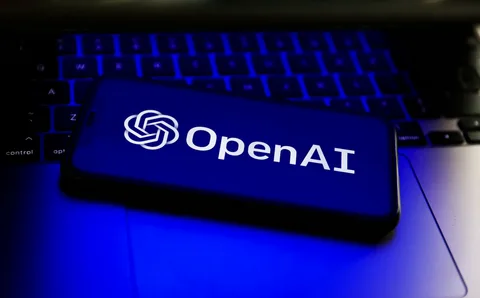As AI technology continues to advance, the potential of the ChatGPT iOS app to enhance user experience is bound to grow exponentially. Let’s explore some future possibilities and areas of improvement:
Contextual Understanding: Enhancing ChatGPT’s contextual understanding will enable it to provide more accurate and relevant responses. By analyzing the ongoing conversation and considering the user’s history, the app can develop a deeper understanding of user intent, leading to more personalized interactions.
Voice and Emotion Recognition: Integrating voice and emotion recognition capabilities into the app can take user experience to a whole new level. ChatGPT ios app could understand tone and emotions in the user’s voice, responding with empathy and adjusting its interactions accordingly.
Multi-Modal Interaction: Expanding ChatGPT’s abilities to handle multi-modal inputs, such as images or videos, would enable users to communicate more naturally and creatively. Users could describe a visual concept or ask questions related to images, and the app could respond accordingly.
Enhanced Offline Support: Although ChatGPT is an online application that relies on cloud servers, improving its offline capabilities would be a valuable addition. Offline support ensures that users can access basic features and information even when they are in areas with limited internet connectivity.
Collaboration and Social Features: By enabling collaborative features, users can work together with ChatGPT to solve problems, brainstorm ideas, and collaborate on projects. Moreover, social elements could create opportunities for users to share their experiences and creative interactions with others.
Customization and SDKs: Offering customization options and software development kits (SDKs) would empower developers and businesses to integrate ChatGPT’s capabilities into their own applications, tailoring the AI experience to meet specific needs.
Continuous Learning and Model Updates: Keeping ChatGPT up-to-date with the latest information and advancements will ensure that it remains a relevant and reliable source of knowledge. Continuous learning mechanisms can make the app smarter over time, incorporating real-world knowledge and trends.
Ethical Considerations: As AI technology becomes more pervasive, addressing ethical concerns becomes crucial. OpenAI has been at the forefront of responsible AI development, and further advancements should prioritize user privacy, transparency, and ethical usage.
Integration with Augmented Reality (AR) and Virtual Reality (VR): Imagine a world where ChatGPT can not only respond to your queries but also manifest as a virtual assistant in AR or VR environments. This integration could make learning, gaming, and other experiences more immersive and interactive. For example, students studying history could virtually interact with historical figures, stepping into historical events to gain a deeper understanding of the past. Language learners could practice conversing with virtual native speakers, making language learning more engaging and authentic.
Contextual Understanding: Enhancing ChatGPT’s contextual understanding will enable it to provide more accurate and relevant responses. By analyzing the ongoing conversation and considering the user’s history, the app can develop a deeper understanding of user intent, leading to more personalized and contextually appropriate interactions. This will make the app feel even more like a knowledgeable and understanding companion.
Voice and Emotion Recognition: Integrating voice and emotion recognition capabilities into the app can take user experience to a whole new level. ChatGPT could understand the user’s tone, emotions, and sentiments in their voice, responding with empathy and adjusting its interactions accordingly. For example, the app could detect if a student is frustrated while attempting a challenging math problem and offer encouraging words or alternative approaches to keep them motivated.
Multi-Modal Interaction: Expanding ChatGPT’s abilities to handle multi-modal inputs, such as images or videos, would enable users to communicate more naturally and creatively. Users could describe a visual concept or ask questions related to images, and the app could respond accordingly with relevant information or explanations. This would make learning more interactive and cater to different learning styles.
Enhanced Offline Support: Although ChatGPT is an online application that relies on cloud servers, improving its offline capabilities would be a valuable addition. Offline support ensures that users can access basic features and information even when they are in areas with limited internet connectivity, making the app more reliable and accessible in diverse settings.
Collaboration and Social Features: By enabling collaborative features, users can work together with ChatGPT to solve problems, brainstorm ideas, and collaborate on projects. Moreover, social elements could create opportunities for users to share their experiences and creative interactions with others. For instance, students could collaborate with peers on a joint research project with ChatGPT offering insights and assistance throughout the process.
Customization and SDKs: Offering customization options and software development kits (SDKs) would empower developers and businesses to integrate ChatGPT’s capabilities into their own applications, tailoring the AI experience to meet specific needs and industry requirements. This could lead to a wide range of specialized educational tools catering to various subjects and learning domains.
Continuous Learning and Model Updates: Keeping ChatGPT up-to-date with the latest information and advancements will ensure that it remains a relevant and reliable source of knowledge. Continuous learning mechanisms can make the app smarter over time, incorporating real-world knowledge and trends, and addressing any limitations or biases that may arise.
Ethical Considerations: As AI technology becomes more pervasive, addressing ethical concerns remains crucial. OpenAI has been at the forefront of responsible AI development, and further advancements should prioritize user privacy, transparency, and ethical usage. Striking the right balance between convenience, personalization, and data privacy is essential for ensuring a positive and trustworthy user experience with AI.
Conclusion
The ChatGPT iOS app represents a significant leap in the integration of AI with everyday devices, fundamentally transforming the user experience. Its conversational interface, personalization, real-time assistance, and productivity-enhancing features make it a powerful and user-friendly tool. As AI technology continues to advance, the future holds exciting possibilities for ChatGPT in education, entertainment, productivity, and various other domains. However, it is crucial to approach these advancements with responsible AI practices and ensure that the technology remains user-focused and ethical. By nurturing a symbiotic relationship between AI and humans, we can unlock the true potential of the ChatGPT iOS app and make our interactions with technology more natural, engaging, and enriching.





